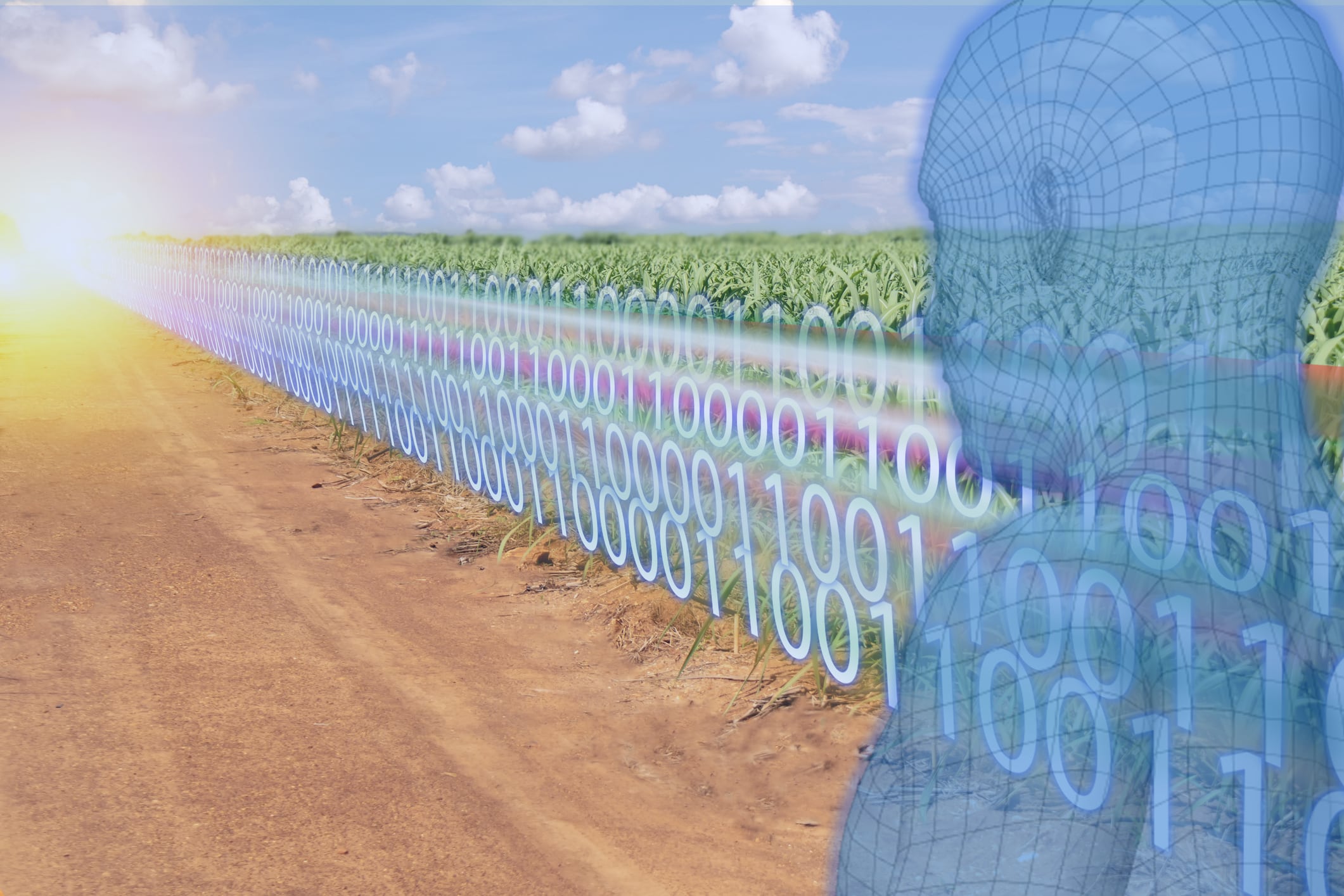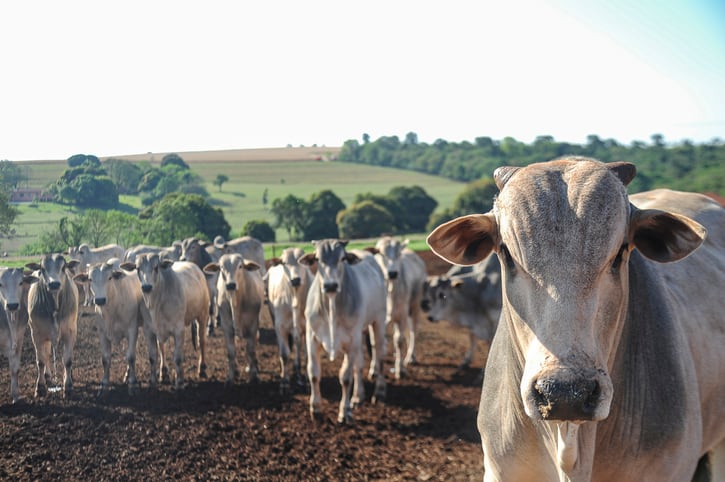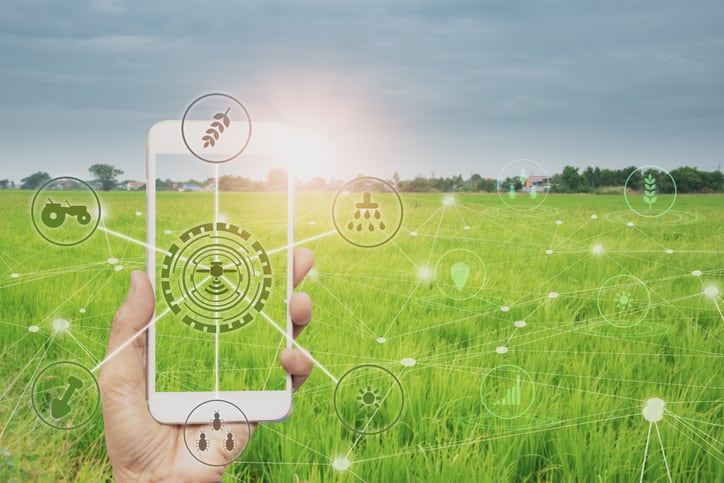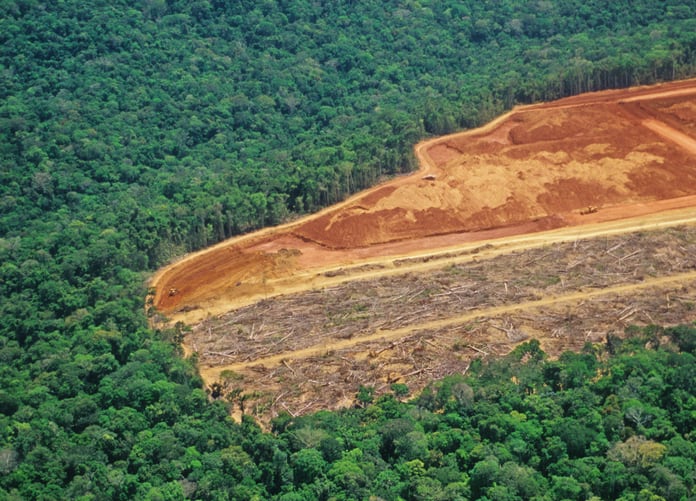Connecting a global community of 550 million farmers, many of whom still rely on analogue systems, to digital services is vital for transforming agriculture.
“This transition would enable the collection, analysis, and impactful use of data, providing the support needed to drive meaningful change and improve agricultural practices worldwide,” says Andreas Cerdan, chief commercial officer of Dimitra.
An agtech software company, Dimitra uses a blockchain-based operating system in its goal to drive productive, intelligent, and inclusive farming globally.
“We’re collaborating with experts, including PhDs and data scientists, who are developing tools for Agriculture 2030. At the same time, we’re working with smallholder farmers, many of whom have rarely used a smartphone, to encourage them to embark on a digital journey with us,” Cerdan shares.
With a presence in over 45 nations, Dimitra is running projects ranging from small-scale initiatives to large, government-backed programmes. “We are digitising farming communities in markets such as Ethiopia, Uganda, Peru, Brazil, India, and Indonesia,” he adds.
In March 2024, the company became one of the first firms to certify a coffee shipment as compliant with the EU Deforestation Regulation (EUDR). It partnered with CACI Satinaki, a farming cooperative in Peru, to facilitate a fully certified coffee shipment under the regulation, utilising a combination of satellite analysis, AI, blockchain, and mobile technology.
“Right now, we’re focusing heavily on coffee and cocoa because farmers in these sectors are often scattered across rural areas. A cocoa or coffee farmer might have just 5 or 10 trees, picking a few cherries to sell at the market when they need money,” explains Cerdan.
This fragmented farming community is among those most in need of support, especially when it comes to crucial first steps such as registering farms and setting up geofences.
“These geofences are essential for analysing land use and ensuring compliance with deforestation regulations since 2020. While these steps may seem simple in a digital world, they can be overwhelming for analogue communities.”
That’s why it’s critical to not only guide them through the process but also set the right expectations and demonstrate immediate value to encourage their participation, he tells us.
Regulatory pressure: The EUDR and its role in driving change
The EUDR mandates that all operators in the supply chain - from farm to shelf - collect specific levels of data, says Cerdan.
“This process begins with mapping each supplying farmer’s land using a geofence, ensuring traceability from the farm to the grocery chain, roaster, or other operators in the destination country. Operators at the end of the chain are incentivised to ensure that data flows seamlessly from the farm level. We help bridge this connection through intuitive and easy-to-use applications. Our clients include not only stakeholders on the ground but also roasters and grocery chains in destination countries, who play a key role in driving the momentum for scaling farmer onboarding.”
While farmers are eager to participate, they often lack the funds to invest in technology or hardware. To address this, Dimitra collaborates with various operators along the supply chain to secure funding for the initial onboarding process.
In the soy value chain, Dimitra has been working with a major European organisation for the past year and a half to develop a technology platform tailored to their needs.
“At the same time, we’re working with large soy producers and traders in India, where we encountered challenges in collecting farm-level data. In regions with smaller producers, like India, one of our clients aimed to onboard their first supply chain with 50,000 farmers. They had access to a national database with farm shapefiles, but when we analysed the data, we found it lacked sufficient reference points to accurately geolocate each plot. As a result, we had to launch a large-scale, on-the-ground operation to manually register farms and collect the necessary data,” Cerdan explains.
Monetisation and sustainable support
Monetisation occurs at the point of export.
“For example, coffee that meets EUDR requirements receives a premium - let’s say $100 per tonne. Once the necessary data set for European export is analszed and verified, this premium is applied. Of that $100, we receive approximately 12-13%, while the remainder goes to the cooperative.
“This premium helps fund our efforts to onboard farmers. Additionally, we establish long-term agreements with cooperatives to help them monetise their carbon credit opportunities,” Cerdan explains. “Our business model is flexible and adapts based on the commodity and region in question.”
However, financing the initial registration of farming communities remains the biggest bottleneck. “This is a challenge we all need to tackle together, as traceability is essential - regardless of whether the EUDR takes effect this year, next year, or next month,” Cerdan notes.
Stabilising smallholder farming communities requires connecting them to a digital landscape, he stresses. “This enables large-scale knowledge transfer and unlocks new business opportunities in the digital world, ultimately helping farmers create a more stable and sustainable income.”
The promise of blockchain
Dimitra leverages blockchain technology to send and receive immutable data records, ensuring trust and reliability.
“This alone adds significant value by enabling secure data transfers,” Cerdan explains.
As the next step in building trust, Dimitra is developing protocols to document certain transactions on the blockchain using smart contracts.
“For example, in a transaction between a trader and a shipper, goods and payments can be clearly defined and executed step by step on the blockchain. By programming these transactions, we create an environment that streamlines millions - even billions - of small transactions within the supply chain. This is the future of blockchain integration as we continue advancing our technology.”
Dimitra is fully independent of any specific operator in the supply chain. “Our financing comes through our own Dimitra token, supported by small investors who provide the liquidity we need to grow. This independence allows us to remain agile and farmer-focused,” says Cerdan.
“Second, our primary focus is on smallholder farmers. While we offer applications for all operators—from farm to shelf—our core mission is to provide intuitive digital tools for farmers and incentivise their participation through a compelling value proposition. By taking a 360-degree view of the supply chain, we connect stakeholders at the end of the chain, who can invest in technology, with farming communities that currently receive access to our software for free or at minimal cost.”
Training the trainers and scaling up
Scaling the on-the-ground teams is a key focus.
“We approach the digitalisation of farmers step by step. The key to success lies in stakeholder engagement - empowering local communities rather than imposing solutions from the outside. We identify thought leaders within farming communities and train them to become software trainers. By giving them responsibility, we ensure that knowledge spreads organically,” Cerdan says. “Our goal is to make training so simple and intuitive that anyone interested in technology can take on this role.”
Dimitra hopes to replicate the ‘science of spread’ seen in social media communities and apply it on the ground, ensuring sustainable adoption of digital tools.
Tools to share data
Farmers primarily use Android-based smartphones or tablets.
“Community leaders visit farms to register them one by one, using satellite imagery to draw a simple geofence around each plot. The process is user-friendly - adjusting a few points on the map creates the geofence, and the farmer then answers 28 straightforward questions to generate the initial dataset,” says Cerdan.
To accelerate onboarding, Dimitra also organises group registrations at community centers or, in some cases, integrates existing farmer databases in Excel format.
“Different regions require different approaches, but the goal remains the same: making digital adoption as seamless and accessible as possible.”
Additionally, Dimitra is working on gamification elements to encourage engagement beyond just compliance with deforestation regulations.
“For instance, educating farmers on simple agricultural practices - like tree pruning, which can increase coffee yields by 30% in two to three years - can be integrated into the platform through interactive action sets,” explains Cerdan.
Goals of larger NGO and government projects
In Indonesia, Dimitra is collaborating with the government to standardise data collection processes for coffee and cocoa farming communities, with the goal of expanding these methods to other crops. The software firm serves as a technical advisor, conducting gap analyses on Indonesia’s existing digital infrastructure for farm-level data.
“We then integrate our software modules into their system while also supporting operational strategies, training programmes, and methodologies for farmer registration,” Cerdan reports.
Asked if these methods can be applied to palm oil, he says: “Yes, but palm oil operations are more centralised than smallholder coffee and cocoa farms. Larger palm oil plantations already have more structured data collection processes. However, where there are gaps, our solutions can be applied. Our focus is driven by demand, and currently, our primary commodities are coffee, cocoa, soy, and, to some extent, palm oil.”
He also hinted at an upcoming CO2 project and a key partnership that will provide additional momentum, particularly in securing the initial investment needed for farmer onboarding.
“A major focus of our efforts is bridging the gap between farmer registration and monetisation - whether through different business models, investor partnerships, or innovative funding mechanisms,” Cerdan concludes.





